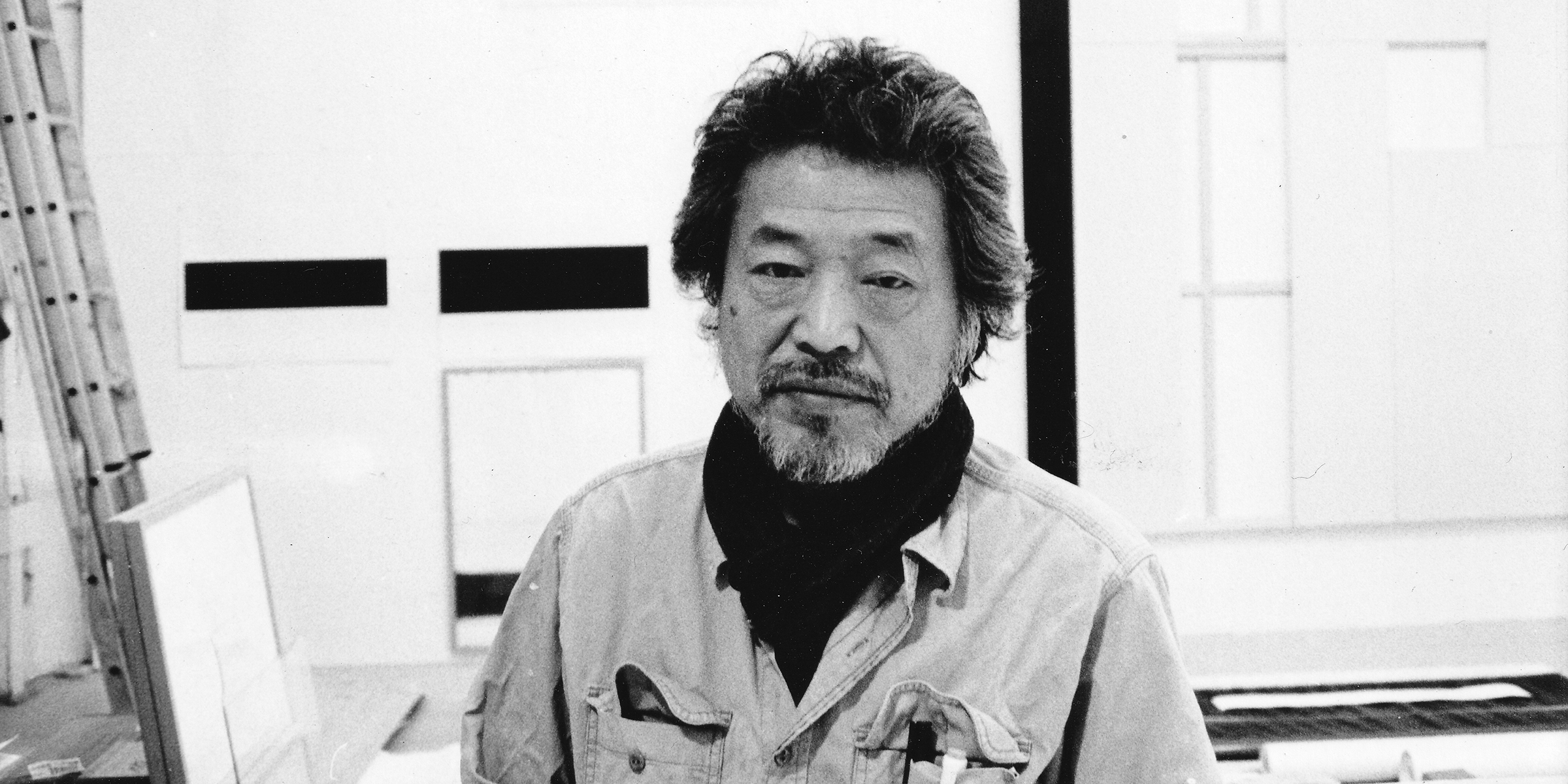
Noriyuki Haraguchi (1946–2020) introduced his iconic work Oil Pool to a global audience in 1977 at Documenta 6. The piece—a large steel basin filled with waste oil—offered a powerful expression of gravity and horizontality, two natural forces inherent in industrial materials. It remains a landmark in the history of contemporary art.
As early as 1968, Haraguchi had begun to challenge the conventions of art history. He built a life-sized replica of the Skyhawk fighter jet, severing its front section to reveal a hollow cavity at the rear. This unsettling juxtaposition of mechanical solidity and empty space led to a new series of works featuring flat, honeycomb-like structures.
Through that evolving body of work, Haraguchi emerged as a post-minimalist artist committed to exploring the essence of materials. Alongside contemporaries in Japan, Europe, and the United States, he continued to push the boundaries of painting and sculpture through persistent experimentation and conceptual rigor.
Noriyuki Haraguchi was born in Yokosuka on August 15, 1946—one year after the end of World War II.
Yokosuka, to this day, remains a significant naval base shared by the U.S. military and Japan’s Self-Defense Forces. Its surrounding ports form an intersection of military infrastructure and everyday life, are dotted with both naval vessels and fishing boats. Between 1954 and 1960, Haraguchi’s father, a radar engineer, was transferred to a remote town in the Tohoku region (northern Japan) as part of the national defense strategy. These two contrasting settings—one marked by international military presence and the other by rural isolation—shaped Haraguchi’s early worldview.
The cultural tensions and overlaps he experienced left a lasting impression, eventually guiding Haraguchi toward artistic explorations of what he called primal landscape. In 1968, after witnessing a U.S. naval jet fighter being transported through city streets, Haraguchi created A-4E Skyhawk, a full-scale sculptural reproduction of the aircraft. In Haraguchi’s view, the work transcended political interpretations and instead reflected a fundamental inquiry into form and matter. This project marked a pivotal moment in the formation of his post-minimalist philosophy and artistic identity.
Haraguchi began developing the Oil Pool series in 1971, culminating in the work Matter and Mind I (1977), which he presented at Documenta 6 in Kassel. This exhibition marked his international breakthrough, earning recognition for his rigorous investigation into the essential nature of matter. In his practice, Haraguchi focused not on surface appearance but on the internal structure of materials—seeking to reveal their inherent materiality. Whether working in two or three dimensions, he consistently emphasized the latent space embedded within physical forms.
Although long based in Zushi, near his hometown of Yokosuka, Haraguchi returned to the northern Tohoku region of Japan between 2010 and 2020, reconnecting with a landscape that had influenced his early life.
Over a career spanning more than five decades, Haraguchi exhibited his work extensively in Japan, the United States, Europe, and Asia. He was the subject of several major retrospectives, including Noriyuki Haraguchi at the Städtische Galerie im Lenbachhaus, Munich (2001); Society and Matter at BankART 1929 Studio NYK, Kanagawa (2009); and a solo exhibition at the Yokosuka Museum of Art, Kanagawa (2011). In recent years, his work has also been included in a number of significant international group exhibitions, such as Das schwarze Quadrat: Hommage an Malewitsch at the Hamburger Kunsthalle, Hamburg (2007); Requiem for the Sun: The Art of Mono-ha at Blum & Poe, Los Angeles (2012); and Tokyo 1955–1970: A New Avant-Garde at The Museum of Modern Art, New York (2012).
Exhibition History
Selected Works and Installation views
Selected Bibliography
- Schneckenburger, Manfred, ed. Documenta 6. Kassel: P. Diederichs, 1977.
- Matter and Perception 1970: Mono-ha and the Search for Fundamentals. Tokyo: Yomiuri Newspaper Company, 1995.
- Friedel, Helmut. Noriyuki Haraguchi: Catalogue Raisonne 1963-2001. Berlin: Hatje Cantz, 2001.
- Uecker, Günther and Kazue Kobata. Noriyuki Haraguchi: Society and Matter. Yokohama: BankART 1929, 2009.
- Takashima, Naoyuki. Noriyuki Haraguchi: Work on Paper and Relief. Yokosuka: Yokosuka Museum of Art, 2011.
- von Oehsen, Kristine. Das schwarze Quadrat: Hommage an Malewitsch. Hamburg and Ostfildern: Hamburger Kunsthalle and Hatje Cantz Verlag, 2007.
- Yoshitake, Mika, ed. Requiem for the Sun: The Art of Mono-ha. Los Angeles: Blum & Poe, 2012.
- Chong, Doryun, ed. Tokyo 1955-1970: A New Avant-Garde. New York: The Museum of Modern Art, 2012.
- Holmberg, Ryan, Reiko Tomii, and David Raskin. Noriyuki Haraguchi. New York: Fergus McCaffrey, 2015.
- Nakai, Yasuyuki. “Being Noriyuki Haraguchi.” Translated by Cheryl Silverman. Noriyuki Haraguchi – How Freely I Can Open Up This Space And Time I Am Sharing. Hong Kong: Wamono Art, 2022.
- Eickhoff, Beate, Henrike Stein, and Anika Bruns. Zero Pop Minimal—Die 1960er und 1970er Jahre. Wuppertal: Von der Heydt Museum, 2023.
Public and Private Collections
- Tate Modern, UK
- Von der Heydt Museum, Germany
- Städtische Galerie im Lenbachhaus and Kunstbau, Germany
- Kröller-Müller Museum, Netherlands
- Tehran Museum of Contemporary Art, IranKravis Collection, USA
- Toyota Municipal Museum of Art, Japan
- Fukuoka Art Museum, Japan
- Oita Art Museum. Japan
- Ube City Open-Air Sculpture Museum, Japan
- Meguro Museum of Art, Japan
- The Museum of Modern Art, Saitama, Japan
- Miyanomori Art Museum, Japan
- G foundation, Malaysia, Japan